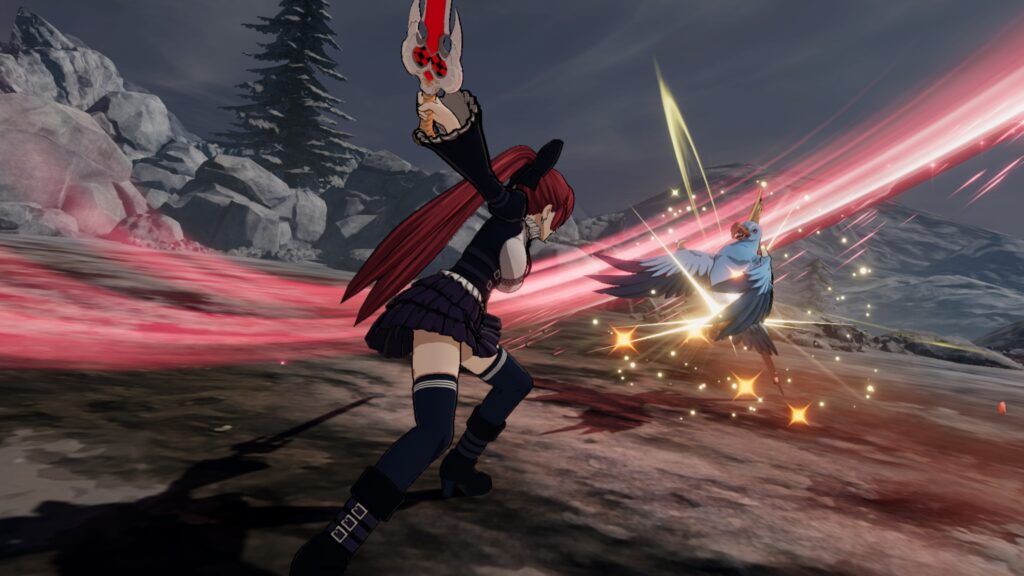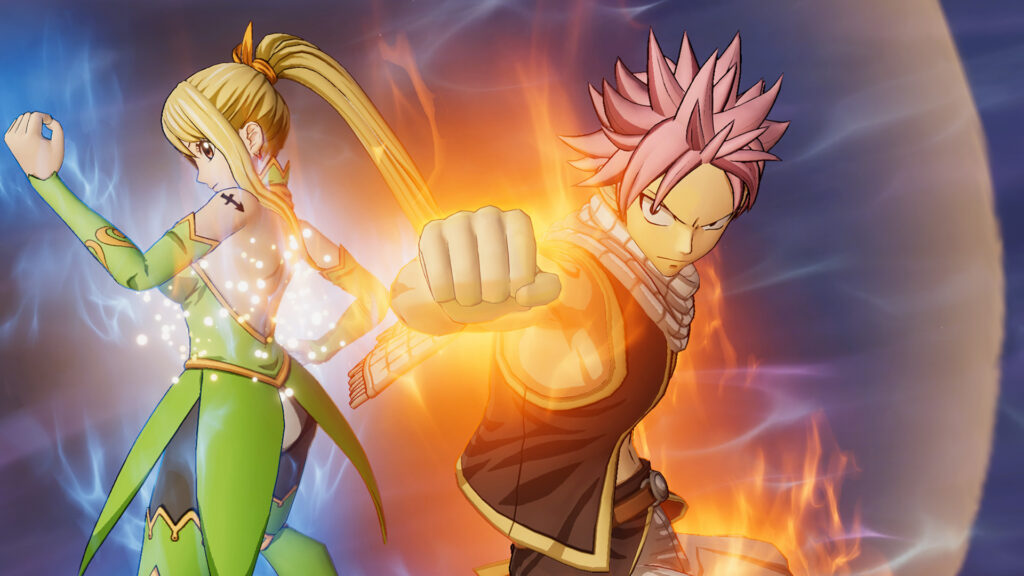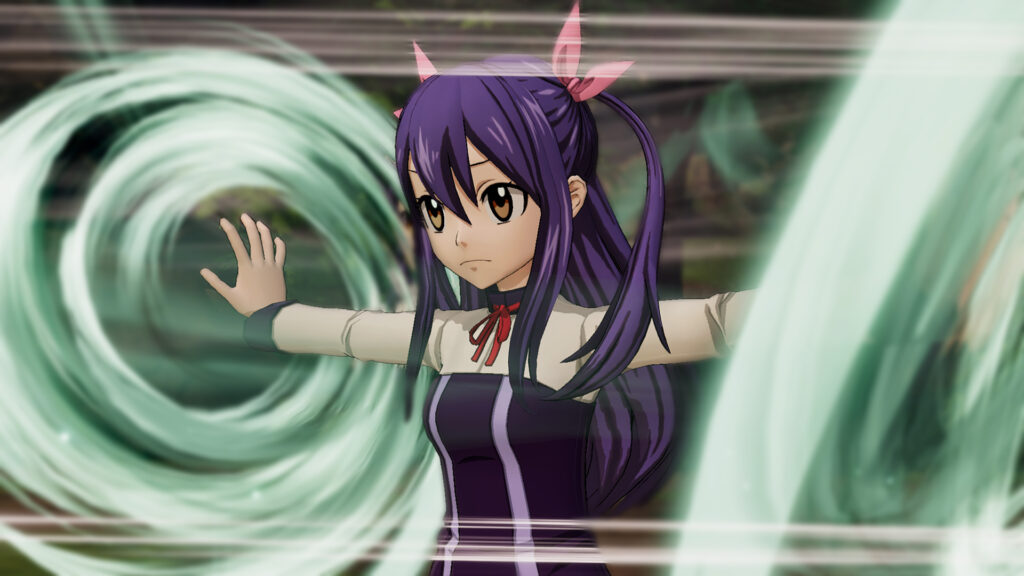
Fairy Tail demands you do your anime homework before playing this JRPG
After Laxus transfers the last of his magical energy to Natsu, the children of Makarov come together as a guild but still only scarcely rise to victory over Hades, having never expected to encounter the disgraced second master while searching for the first master’s grave, and… oh, wait, sorry – you’re confused? Yeah, that’ll happen playing Fairy Tail.
Based on the hit manga and anime series of the same name, Fairy Tail isn’t the first video game adaptation of the franchise, but it is the first one to be released in the west. Unfortunately, it expects players to already be well-versed in the property, throwing you in at the deep end with not so much as an intro to the cast. By the time a group of about 20 characters tearfully join hands to cast a shielding spell to protect them from an apocalyptic dragon that’s appeared from nowhere – which, as an exposition-dump proceeds to tell players, leads to a seven-year time skip after which the bulk of the game takes place – there’s a good chance you’ll have zoned out and stopped caring. Sadly, this point is less than an hour in.

For the utterly unacquainted, Fairy Tail is a fantasy action manga created by Hiro Mashima, first published in 2006. The comic spawned a long-running anime, both focusing on hero Natsu Dragneel – a fire-wielding mage – as he searches for his missing adoptive father. Joining the Fairy Tail guild of adventurers, Natsu and his partner Happy – a blue flying cat-like creature – are joined by an ever-growing team of spellcasters, each specialising in a different form of magic.
If you are familiar with the source material, this RPG from Gust – developers of the Atelier series – adapts elements from the Tenrou Island, X791, Grand Magic Games and Tartaros arcs. It perhaps adapts them a bit too faithfully though, with characters coming and going with little explanation, constant references to ill-defined people or places, and literal flashbacks to events that precede the game’s material.
This in media res approach continues to backfire throughout the game. At one point, a character learns their father has died during the time skip, but the scene is devoid of emotional resonance for any players who don’t know who they are. When Juvia, a water witch, repeatedly throws herself at ice-user Gray Fillbuster, it comes across as even creepier than it does if you know the characters from the source material. On and on, almost everything the game throws as you narratively fails to land, because it does nothing to earn or establish its big moments here, preferring instead to rely on assumed knowledge.

The impenetrability is a real shame though, since behind the gatekeeping lies a fun, if undeniably simple, JRPG. Visually, it’s close to playing the anime itself, with characters remaining on-model and voiced in Japanese, making for a brilliantly authentic experience for existing fans. Its environments and locations are beautifully put together too, particularly the hub town of Magnolia, although there’s not as much to do or interact with in any locale as we’d like. Mechanically though, Fairy Tail is almost a throwback to the wispy, nostalgia-goggled halcyon days of PS2 role-playing games, coupling exploration of set, maze-like locations with a turn-based battle system.
It has a few tricks up its sleeve when it comes to combat though, making it one of the game’s real highlights. Rather than your heroes and their enemies merely taking turns to beat the other up, encounters also incorporate a grid system. Each of your attacks will affect a set pattern of squares, though certain moves can knock enemies to different positions. Used tactically, this allows you to line up opponents to be hit by other party members’ spells, amplifying damage.
Battles are a lot faster and more dynamic than you might expect for a turn-based system, with flashy solo attacks slicing through foes in style, while team chain attacks are capable of demolishing whole teams of monsters in one fell swoop. Throw in super-charged ‘Awakened’ attacks as you progress through the game, and even encounters with your thousandth grunt monster can be exciting.

One of the nicest flourishes though, and a subtle departure from most JRPGs, is that Fairy Tail remembers its entire playable cast are mages, not warriors. Everything in battle is structured around delivering as much magical damage as possible – the genre’s traditional physical attack is relegated to a last resort, used only when you’ve used all your MP and can’t cast spells. Even Erza Scarlet, a tough-as-nails senior member of the guild whose magic manifests as various physical weapons and armours, relies on mystic might to bring the pain.
Given one of the core concepts of Fairy Tail is the strength and camaraderie of the eponymous guild of magic users, it’s no surprise there’s also a side of relationship management. As you rebuild the guild following their seven-year absence, teammates will go from guests accompanying you in battle to actively playable heroes. The more missions you complete with them in the same party, the more you’ll forge bonds between them, which unlock in-battle bonuses and character stories which boost their rank, in turn bringing more upgrades and customisation options. It’s nothing as complex or nuanced as the similar system in the Persona games – some of the character stories are as short as the skits from the Tales of series – but it’s all nicely handled and always feeds back into the battle system, improving characters’ potency in combat.

Away from battles, you’ll also have to fulfil civilian requests, gather items for crafting, and rebuild the guild hall. Restoring and upgrading facilities there is a nice secondary goal, keeping you focused on restoring Fairy Tail’s former standing. You’ll start off with a shop, bulletin board – where you take on quests – and laboratory, with more rooms added to the guild hall over time. The lab will be where you spend the most time early on though, as it allows you to craft and upgrade Lacrima, Fairy Tail’s answer to Final Fantasy VII’s Materia: equippable items allowing you to customise characters’ skills and abilities.
As you may be able to tell from the comparison to three other JRPG series in the last two paragraphs, there’s nothing terrifically original about any of Fairy Tail’s aspects, but everything combines and works well here. This is the gaming equivalent of comfort eating – you know exactly what you’re getting, it’s not the most fulfilling, but it’s still strangely satisfying. While existing fans of the source material will undoubtedly get the most out of this, there is an entertaining game here for any fan of the genre – but only if you can get past having no clue what’s going on or why for most of the game.





